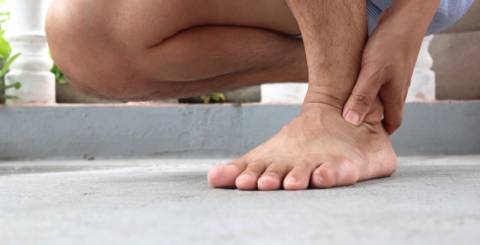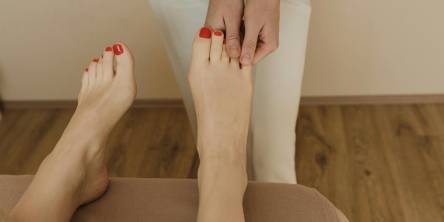10 Effective Steps to Relieve a Gout Attack

Gout is a particularly painful form of crystalline or inflammatory arthritis characterized by swollen, stiff joints caused by elevated serum urate levels. Gout, which is frequently associated with genetics, is not the lifestyle consequence that has been often portrayed. Forget the stereotype of carousing, overindulgent men like King Henry VIII succumbing to gout.
That's just blaming the victim. While it affects men more than women and can be exacerbated by obesity and diet, genetics play a larger role.
During a gout attack, the affected joint swells become warm to the touch and turn bright red. Even light pressure on the joint can be excruciatingly painful. According to the Alliance for Gout Awareness, the majority of attacks occur in the middle of the night and begin in the big toe.
Do you want to avoid excruciating pain? Make sure you have a strategy:
1. Get a Diagnosis
If this is your first attack, see your doctor as soon as possible. Gout is one of the most underdiagnosed diseases due to a lack of information on how to treat high uric acid levels. We now have more information. If you are experiencing a flare, you should have a plan of action in place that you developed with your doctor. The sooner you begin treatment and pain management, the sooner you will be able to get back on your feet.
2. Use the Right Anti-Inflammatory Medications
There are three types of effective medications: over-the-counter nonsteroidal anti-inflammatory drugs (NSAIDs) such as ibuprofen, aspirin, or naproxen sodium; prescription steroids; or colchicine, a prescription anti-inflammatory that influences how your body reacts to uric acid crystals. Your doctor will determine which is best for your specific needs. If you have kidney disease, NSAIDs are not recommended, and steroids may worsen your blood sugar levels if you have diabetes.
3. Free the Joint
The slightest pressure on the affected area can be excruciatingly painful. People say they can't bear being under a bedsheet. When the joint is flaring up, make sure there are no restrictions on it.
4. Rest and Elevate
Stay away from the affected joint and elevate it as much as possible.
5. Apply Ice — if You Can Bear It
If you can do so comfortably and without causing pain, apply ice.
6. Monitor Your Diet
Limiting purine-rich foods (such as red meat, organ meat, and seafood) and alcohol consumption can help lower uric acid levels (particularly beer and hard liquor).
7. Avoid Dehydration
Drinking water can help flush out the uric acid crystals that cause gout. Drink enough water for a well-hydrated to urinate every two to three hours.
8. Try Mindfulness and Meditation
The good news is that a gout attack is self-limiting and will go away on its own. Meanwhile, the Arthritis Foundation recommends meditation, yoga breathing, mindfulness, and guided imagery to help you cope with pain.
9. Create a Support Network
Because of the stigma associated with gout, many patients suffer in silence. Inform trusted friends and family that you have this disease and reach out for help when you are experiencing a flare.
10. If You Are Having Repeated Attacks, Visit Your Doc
Some patients can go a long time without having an attack. In fact, the next attack will be more than a year away for 62 percent of patients, and some will not have another attack in the next ten years. However, if your attacks become more frequent, consult your pain doctor and rheumatologist about escalating treatment. People believe that having flares every now and then is normal, but it is not. Gout can be harmful to your joints. It means you still have an excess of uric acid. Inquire about allopurinol in particular. It will not help with a current attack, but it will help prevent future attacks by lowering uric acid production.
Similar Articles
If your knees have recently started sounding like a bowl of Rice Krispies (snap, crackle, pop!) every time you stand up, congratulations — you're officially living the adult experience.
Search engine optimization (SEO) may help physical therapists improve their online exposure and drive more visitors to their website.
You're sitting at home with two completely different treatment plans from two doctors you trust.
When conservative therapy fails, surgery may be required to alleviate chronic foot or ankle discomfort.
Your body changes with time - muscles and bones shift, ligaments loosen, and circulation may slow. Unfortunately, the aging process has an impact on our feet as well.
Back problems aren't just discomfort or temporary back pain. Many of them can be extremely dangerous and lead to serious complications if you don't seek medical attention on time.
Sciatica is a condition in which the sciatic nerve, the longest nerve in the human body, becomes irritated or pinched
Irritable bowel syndrome (IBS) is a dysfunction of the gastrointestinal tract that manifests as abdominal pain, bloating, flatulence, and intestinal discomfort (constipation, diarrhea, or a combination of both.
Peripheral neuropathy is when the nerves outside your brain and spinal cord—called peripheral nerves—aren’t working the way they should.









